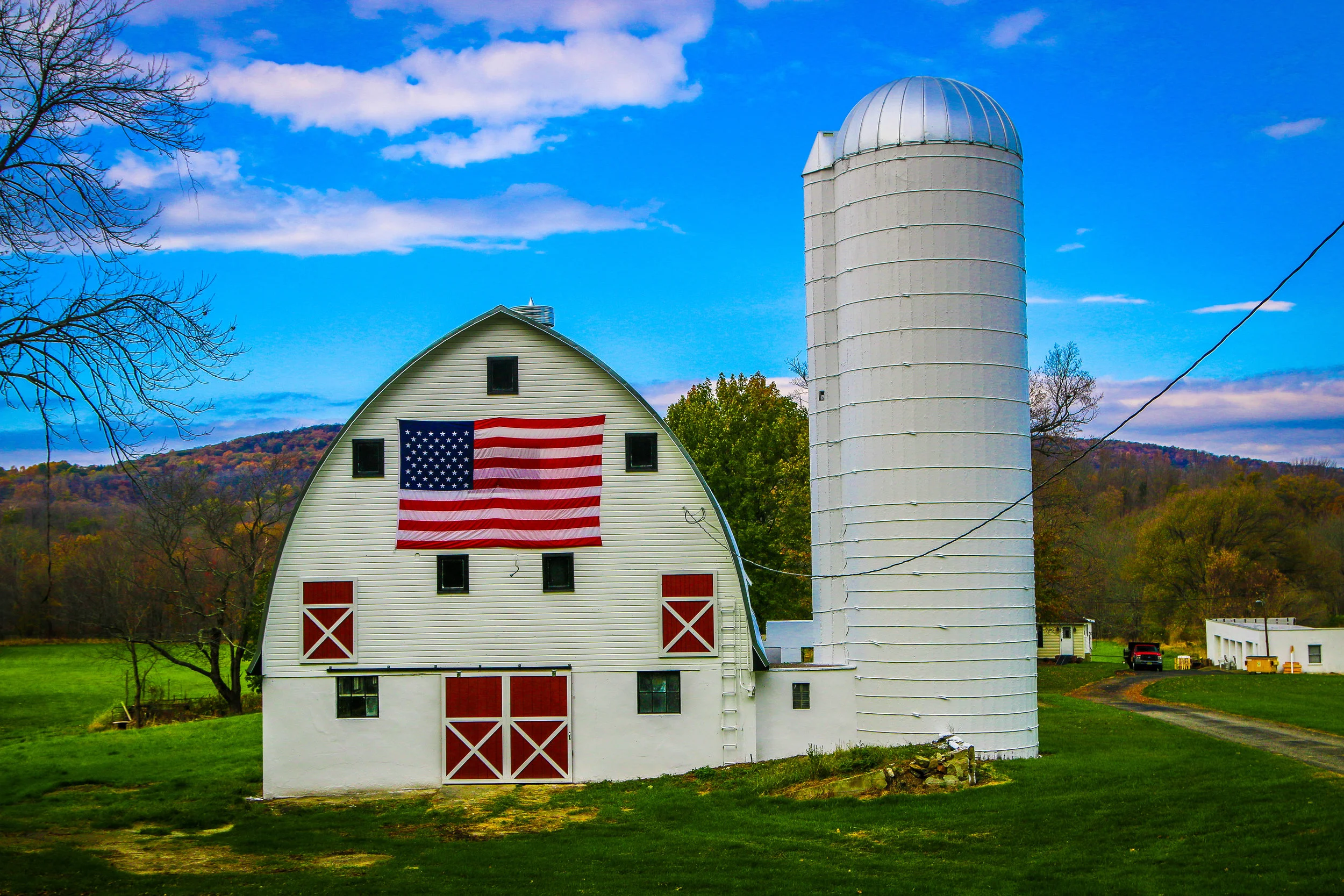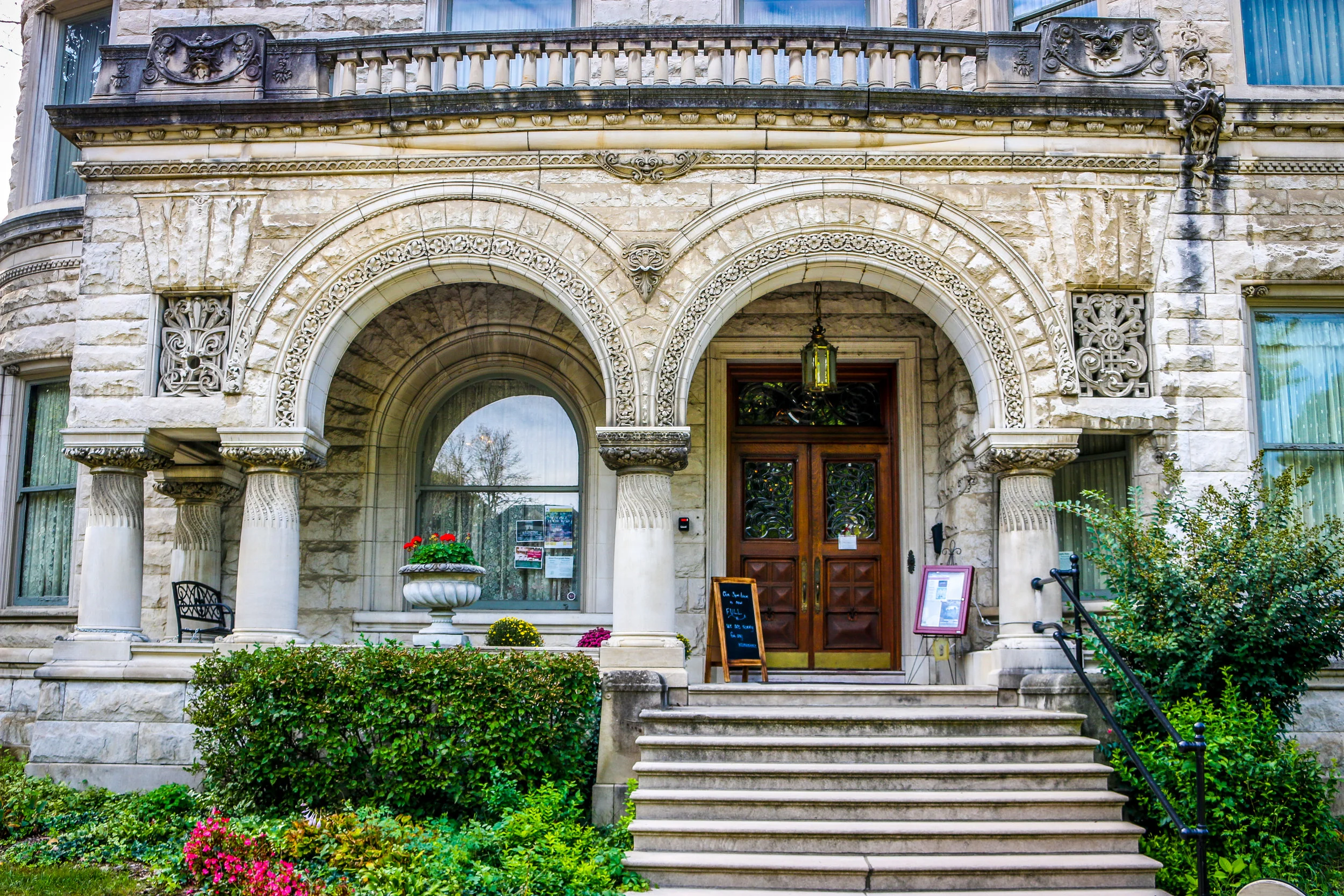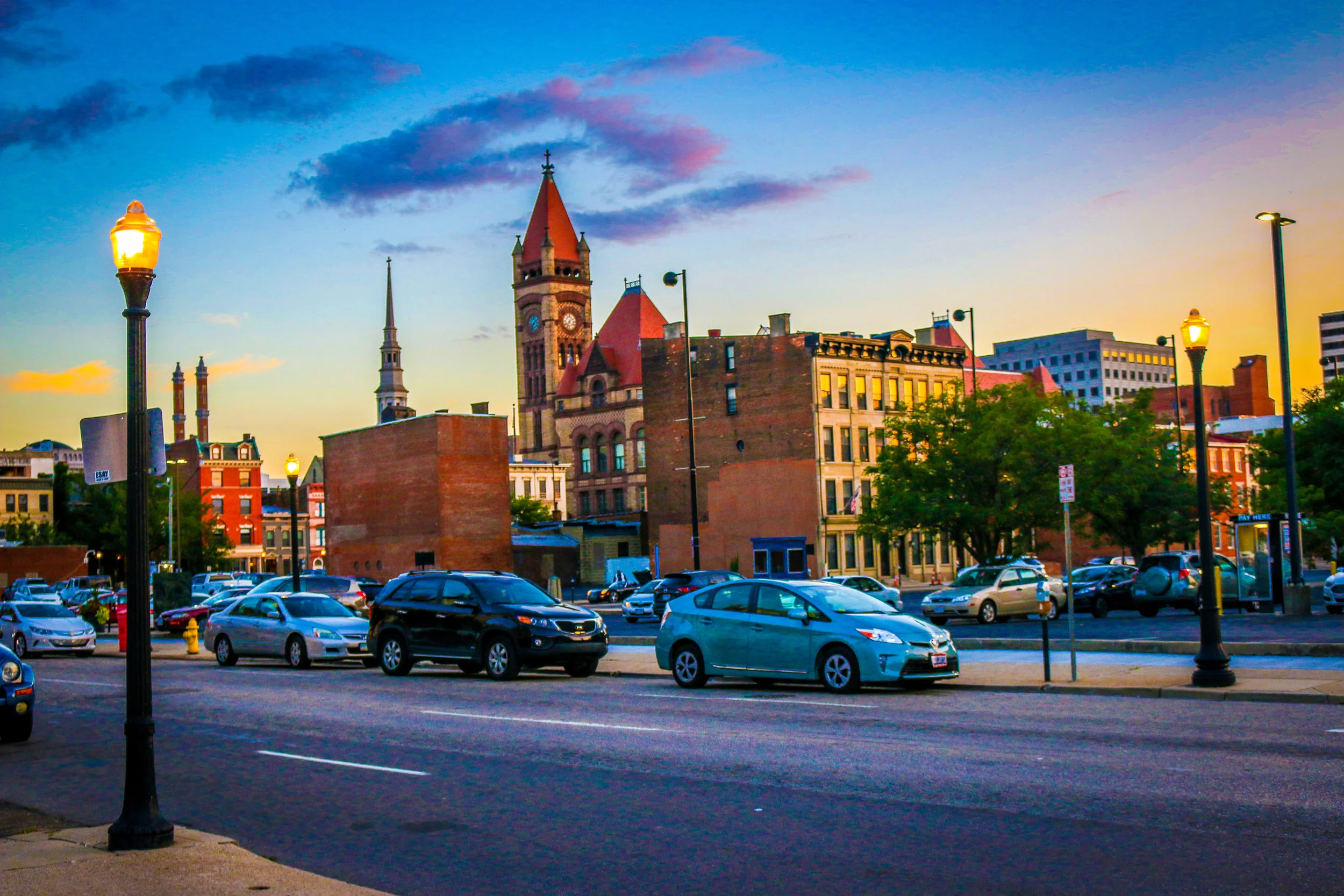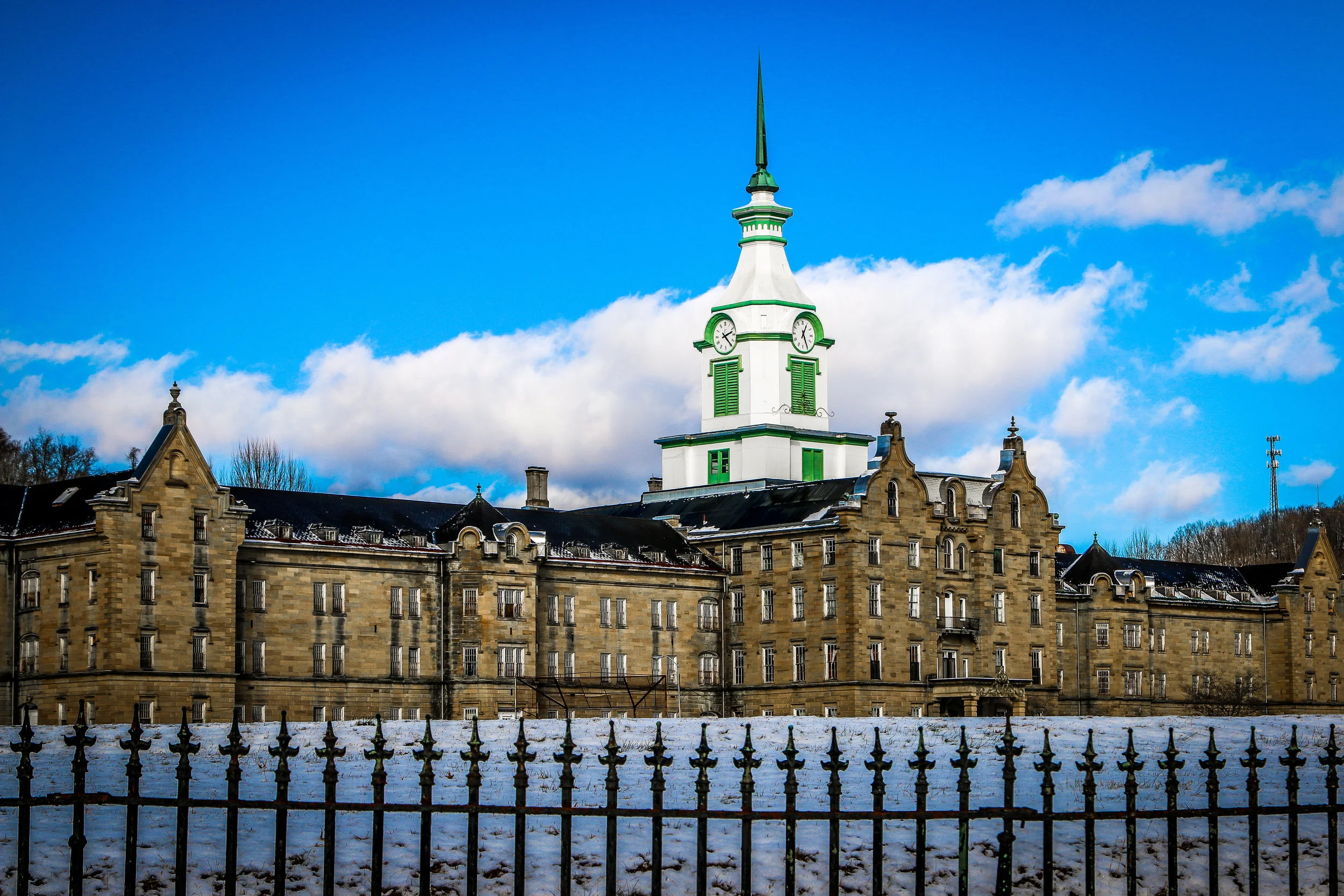In its early days, Algoma was called Wolf River and attracted a diverse community of European settlers to the shores of Lake Michigan. In 1859, the name was changed to Ahnapee and in 1892 the Ahnapee and Western Railway came through and connected this lakefront town to the inland world. In 1897, they changed their name to Algoma and by then the town had grown to become home to one of the largest commercial fishing fleets on Lake Michigan. Today, Algoma has about 3,000 residents and fishing is still a major industry, although sportfishing has replaced commercial fishing. I had a wonderful visit to Algoma and was impressed by the beautiful Victorian architecture of some of the buildings downtown. and by the wonderful beach and lighthouse It was the historic advertising murals and stunning hand-painted signs that really blew me away though. That is until the sun went down and a beautiful dusk settled over this quaint little town painting it dozens of different colors. It takes a lot of effort to make a town look this cute, and Algoma has obviously chosen people with a true sense of the aesthetic who paid really good attention to detail. On your next visit to Door County, be sure you swing through Algoma, you may find yourself sticking around for a while. I hope you enjoy these photos of adorable Algoma, Wisconsin.
Viewing entries tagged
architecture
What exactly is Galveston? Is it a typically Southern town? An island with a beach vibe? An historic port city like New Orleans? A Texan town? The answer to all of those is “yes”. Galveston is a fascinating place with so much to offer. Even after a few days there I felt like I had only begun to scratch the surface of the Queen City of the Gulf.
The first non-natives to inhabit Galveston came in 1816 with the pirate Louis-Michel Aury. When Aury went on a raid the following year, he returned to find that the island had been occupied by the infamous pirate Jean Lafitte. Lafitte set up a “Pirate Kingdom” there and remained with his people for the next 5 years. The Port of Galveston was established under the Mexican government in 1825, and the town would serve briefly as the capital of the Independent Republic of Texas in 1836. Galveston, along with the rest of Texas, joined the Confederacy during the Civil War and became a target due to its major port…
If you’ve been following along with this blog, you know I have visited some truly stunning small towns along the way. I don’t think any of them can compare, however, to beautiful Natchitoches, Louisiana. While you probably won’t be able to pronounce the name, you can’t help but be drawn in by this beautiful old colonial town on the banks of the Cane River. Originally established as a trading post by French explorers, the town gets its name from the Natchitoches Indians who lived in the area and traded with the colonists. The town was officially established in 1714 and would pass from the French to the Spanish and finally to the United States after the Louisiana Purchase of 1803. Natchitoches has all of these cultures on display through its architecture and cuisine. I was especially impressed that the town has its own full time horticulturist who creates and cares for the wonderful flower displays which are placed all over the historic district. I love flowers and these really add to the charm and beauty of the town. Everyone I met during my stay was friendly and helpful and proud of their little corner of the state. Natchitoches is home to some charming B&B’s, delightful restaurants and beautiful places to walk and sit and enjoy the atmosphere. If you ever find yourself looking for an escape from the grind of the city, Natchitoches will definitely take you back a different era and a simpler pace of life. In my very humble opinion, it is the prettiest small town in the South.
Whitehall was the winter residence of Henry Flagler, the father of Florida tourism. Having made his fortune in Standard Oil, Flagler set out to build a railroad from Jacksonville to Key West and a hotel and tourism empire along the way. Bringing tourists too Florida was one thing, but he also brought fruit and vegetables from Florida as well, making tourism and agriculture the two foundations blocks of the Florida economy. One of his signature hotels, The Breakers, is located in Palm Beach very close to Whitehall.
Built in 1902, this Gilded Age, Beaux Arts mansion boasts 75 rooms including a grand ballroom, a spectacular music room, a wonderful library and a beautiful dining room. When it was built, Whitehall included all of the modern amenities of the time including electricity, indoor plumbing and even a telephone. They also had central heat which was surprisingly used mostly in summer to dry the building out from the damaging Florida humidity. It is a beautiful home, inside and out with some phenomenal detail work (albeit most of it was created with plaster casts). I really enjoyed my visit, and I hope you enjoy these photos from Henry Flagler’s Whitehall.
Despite its name, Old Louisville began as a suburb of Louisville sometime around 1870, nearly a century after the city’s founding. Old Louisville covers a 48 block area with one of the largest concentrations of Victorian architecture in the country. Unique to this time period and style, most of the houses in the neighborhood are brick or stone which has kept them in pretty good shape over the years. I loved wandering the neighborhood there and taking these photos. You will see some are of entire houses, while others are of specific details which caught my eye and others still are of neighborhood streets, parks and fountains. It’s a lovely place for a stroll and well worth a visit if you are ever in Louisville.
The “new” Kentucky State Capitol Building was built in 1910 at a cost of just over a million dollars. Designed by Frank Mills Andrews in the Beaux-Arts style, the beautiful Capitol sits high above Kentucky’s capital city of Frankfort. All three branches of the Kentucky government are housed within the Capitol building. The Capitol features a magnificent rotunda and some wonderful statues and artwork throughout. Entrance and tours are free. I hope you enjoy my photos of the Kentucky State Capitol…
After the end of the Civil War, many of Toledo’s wealthiest residents began moving out of downtown and building houses “out in the woods”. This area developed over the next 50 years into the West End neighborhood, now called the Old West End. While it has ebbed and flowed over the years like most old neighborhoods, today it stands as one of the largest collections of intact Late Victorian Era homes in the country. It is a remarkable architectural gem, a living museum and a friendly and welcoming place for a visit. While I was walking around taking photos for this post, I met two long-time residents, Jim and Carol Kutsche, who you will see pictured at the bottom in front of their beautiful home. We sat on their porch for the better part of an hour talking about Toledo and the Old West End. The first day I visited the weather wasn’t in my favor, and the second the light was being difficult, but these photos still came out okay. It was too remarkable a neighborhood to pass by though, and I think you will definitely agree that many of these houses are real gems, even some which are in severe disrepair. If you are in Toledo, you must make time for a stroll around the beautiful Old West End.
Originally settled in 1788 at the confluence of the Ohio and Licking Rivers, Cincinnati grew to be the largest inland city in the country and the sixth largest overall in the years leading up to the Civil War. In the latter half of the 19th Century, Cincinnati was often referred to as the "Paris of America" due to its many large and beautiful buildings. Today, many of these grand old dames still tower over the city harking back to a time when things were built with style and built to last. I spent most of my time in Cincinnati with wide eyes and my camera whirring away. Here are some of my favorite old buildings ranging from private homes to churches to public buildings. Cincinnati is definitely a city worth visiting for many reasons, but the architecture was definitely what struck me the most. Enjoy!
Traveling around the small towns and back roads of West Virginia, occasionally I came across a big beautiful building. Of course there are many beautiful churches around, but I thought a lot of these courthouses and government buildings were really wonderful to photograph. The Cover Photo for this post is the Trans-Allegheny Lunatic Asylum in Weston. Just the name gives me the creeps, but knowing it was in use until 1994 is staggering. Same goes for the West Virginia State Penitentiary in Moundsville which was in use until 1995. Some of these courthouses have amazing stories. The Jefferson County Courthouse in Charles Town was the site of John Brown's trial for leading a slave uprising in 1859. It was also the site of the miners' trials after the Battle of Blair Mountain. The McDowell County Courthouse in Welch was the site where...










